Though it is illegal to grow certain plants in some states, it does not mean that you cannot forage them. Discover eight plants you can use if you chance on them in an area that prohibits them.
The Ribes genus includes gooseberry, black currant, white currant, and red currant. The species is illegal in several states or counties because it behaves as a stand-in host for White Pine Blister Rust (WPBR). The fungus destroyed white pine forests in the northeastern parts of the United States in the early 1900s, killed trees, and threatened the economies that depended on them.
Gooseberry (Ribes hirtellum), Black Currant (Ribes nigrum), Red, and White Currant (Ribes rubrum)
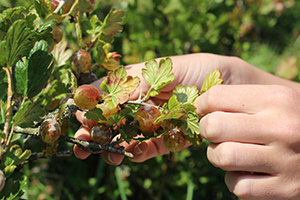 The Ribes species offers various fruits and flowers. They grow near streams and in meadows throughout the northern hemisphere and further south into the mountainous areas of South America. The hardy gooseberry thrives in cool, humid climates, and black currants grow in Vermont, Oregon, Connecticut, and New York.
The Ribes species offers various fruits and flowers. They grow near streams and in meadows throughout the northern hemisphere and further south into the mountainous areas of South America. The hardy gooseberry thrives in cool, humid climates, and black currants grow in Vermont, Oregon, Connecticut, and New York.
The low-maintenance red, white, and black currants mature well in most soil types, partial shade, sun, and colder conditions. These deciduous shrubs are native to western and coastal North America. You can find them in central British Columbia all the way south to central California. Washington State produces the currants commercially.
Where Is it Illegal to Grow the Ribes Species?
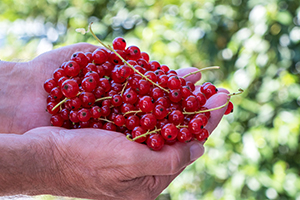 It is illegal to plant gooseberries and black currants in Maine, New Hampshire, Virginia, West Virginia, Ohio, and North Carolina. Rhode Island, New Jersey, Massachusetts, and Delaware enforce a permit system for gooseberries.
It is illegal to plant gooseberries and black currants in Maine, New Hampshire, Virginia, West Virginia, Ohio, and North Carolina. Rhode Island, New Jersey, Massachusetts, and Delaware enforce a permit system for gooseberries.
Related: The 5 Most Common Edible Weeds In Your State
Should you find a plant in New York or Connecticut, you can gather around 12 pounds from a single plant and return for more next year.
Delaware, Massachusetts, Michigan, and Rhode Island have also banned black currants. You need a permit for New Jersey. New York prohibits non-immune WPBR Nigrum, allows disease-resistant plants but prohibits the Ribes species in counties and townships in the Catskills and Adirondacks. Similar restrictions apply to red and white currants.
How to Harvest Currants
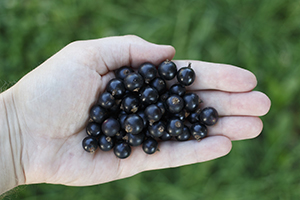 Harvest currants before they are fully ripe but when deeply colored, juicy, firm, but soft.
Harvest currants before they are fully ripe but when deeply colored, juicy, firm, but soft.
They usually ripen in June and July. Pick the red currant fruit clusters or strings rather than individual berries. Use them immediately or store them in the fridge or freezer short-term.
Be careful when you pick those soft gooseberries because the branches have thorns, so arm yourself with a container and heavy-duty leather gloves to prevent injuries. Grip the top of the gooseberry branch with one hand and drag along it to the end. Hold the container underneath with the other hand to catch the berries.
How to Use Them
Red and white currants taste tart but sweeter than black currants. You can use berries and currants to make delicious jams, compotes, and jellies by adding sugar and then boiling and straining them. Eat them raw, use them in salads or as garnishes, and create drinks or wines and syrups. Add them to fruit soups and salads, muffins, summer sorbets, puddings, or combine them with meringue or custard as pie and tart fillings.
Barberry
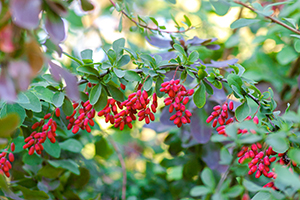 These plants grow in temperate, subtropical regions. The common barberry (Berberis vulgaris) grows in the south-eastern part of Minnesota and the Virginia mountains. They are not native to North America.
These plants grow in temperate, subtropical regions. The common barberry (Berberis vulgaris) grows in the south-eastern part of Minnesota and the Virginia mountains. They are not native to North America.
Related: 8 Edible Backyard Plants And Their Poisonous Lookalikes
Minnesota, Maine, and New York have banned seed-bearing plants that host black stem rust and cause small grain yield losses, including the European and American or Allegheny barberry native to eastern North America. Several areas outlaw the barberry species. The deer-resistant Japanese barberry (Berberis thunbergii) is invasive in 32 states and shelters ticks that carry Lyme disease. New York has approved the sale of sterile plants.
How to Harvest Barberries
Pick them individually to avoid the thorns. Grab onto a fruit-loaded branch near the bottom and scoop the berries off in bunches by pulling up toward the tip if you do not mind spikes.
How to Use Them
They taste like dried, unsweetened cranberries. Use the fruits and seeds but avoid the rest of the plant, which is poisonous but has medicinal properties. The sweet-flavored berries are tart and high in antioxidants. Eat them raw, make jam, use them to make tea, add them sparingly to salads, vegetables, granola, braises, and juice them. Plump them in hot water before putting them in stuffing, grain, and rice dishes.
Related: The States with the Most Medicinal Plants. Do You Live in One of Them?
Wild Sugarcane (Saccharum officinarum)
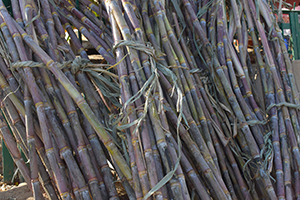 Wild sugarcane grows in Hawaii, Puerto Rico, and from Florida to Texas. This tropical and subtropical grass species can reach 20 feet and resembles bamboo-like corn.
Wild sugarcane grows in Hawaii, Puerto Rico, and from Florida to Texas. This tropical and subtropical grass species can reach 20 feet and resembles bamboo-like corn.
It grows spontaneously, produces sugar in its leaves through photosynthesis, and stores it in its stalks as a sweet juice.
Wild sugarcane grows successfully in Georgia and other southern states. The USDA classifies it as a noxious weed. It is highly regulated in Massachusetts, Florida, South Carolina and quarantined in Oregon and California. Vermont, Alabama, and Minnesota prohibit it.
How to Harvest Sugarcane
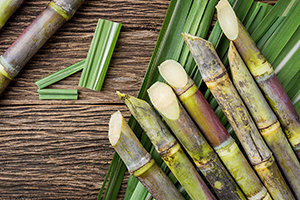 Sugarcane is usually ready for harvest in the fall. Cut the stems close to the ground with a large, sharp cutting blade or hatchet. Stack the shoots on top of each other in a wheelbarrow for transportation. Strip off excess leaves or other foliage as you only use the stalk. Cut the shoots into smaller pieces.
Sugarcane is usually ready for harvest in the fall. Cut the stems close to the ground with a large, sharp cutting blade or hatchet. Stack the shoots on top of each other in a wheelbarrow for transportation. Strip off excess leaves or other foliage as you only use the stalk. Cut the shoots into smaller pieces.
How to Use Them
The stem is edible though it contains little sugar. Chew it, swallow the sweet juice, and spit out the fiber for portable energy. Peel and crush the stems and boil them to make wine and syrup for dishes of all kinds.
Sycamore Maple (Acer pseudoplatanus)
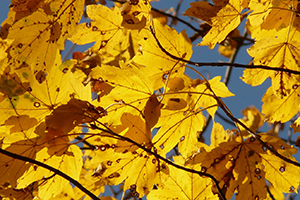 The imported tree can grow between 40 and 60 feet tall. Folks use it for landscaping in suburban and urban areas, and you will often find it growing in coastal communities. It prefers cool summer climates and does not grow well in the south-eastern regions below USDA Zone 7.
The imported tree can grow between 40 and 60 feet tall. Folks use it for landscaping in suburban and urban areas, and you will often find it growing in coastal communities. It prefers cool summer climates and does not grow well in the south-eastern regions below USDA Zone 7.
It produces winged seeds, develops crowded stands that out-shade and outcompete native plants, and harms the local ecology. Massachusetts, Connecticut, and the city of Portland, Oregon, currently ban cultivation.
Related: The Survival Guide To Identifying Leaves
How to Harvest Sycamore Maple Sap
Tree sap starts running between mid-February and April when the daily temperature is mild, but it is still cold at night. You will need a container to collect the sap, a tube with a vent hole, something to make a hole in the tree – such as a cordless drill and a bit the size of the pipe.
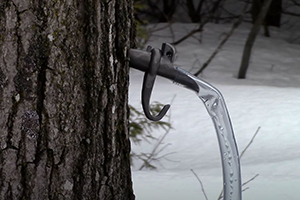 Remember a dowel to plug the hole after tapping the tree. Choose a healthy specimen about 40 years old with a trunk of 12 inches or more across. Trees standing in the open offer the best results. Make a hole through the bark layer with a sharp point a meter above the ground to assess if there is sap.
Remember a dowel to plug the hole after tapping the tree. Choose a healthy specimen about 40 years old with a trunk of 12 inches or more across. Trees standing in the open offer the best results. Make a hole through the bark layer with a sharp point a meter above the ground to assess if there is sap.
If a droplet forms, drill a 1.5-to-2.5-inch hole at a slightly upward angle and clear out the loose shavings. Insert one end of the tube into the hole and the other into the container when the drips flow freely. Taper the peg to fit the hole and stop the sap from leaking out when you have collected enough.
How to Use Them
The Sycamore maple’s close-grained, hard-wearing, creamy-white timber makes excellent joinery, wood flooring, furniture, kitchen utensils, musical instruments and provides good firewood. Use its sweet, drinkable sap to make alcoholic and non-alcoholic beverages such as beer, wine, or syrup, and eat the honey produced by the bees that collect its nectar.
Garlic Mustard (Alliaria petiolata)
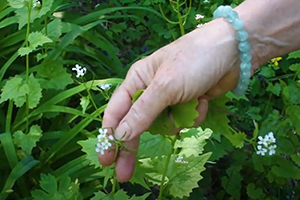 Folks imported garlic mustard for use as a culinary herb. It has natural enemies in its native Europe, but not in the eight US states that banned its deliberate cultivation. It interferes with butterfly reproduction. Insects and wildlife do not eat it, while some believe it overwhelms native plants to become the dominant species.
Folks imported garlic mustard for use as a culinary herb. It has natural enemies in its native Europe, but not in the eight US states that banned its deliberate cultivation. It interferes with butterfly reproduction. Insects and wildlife do not eat it, while some believe it overwhelms native plants to become the dominant species.
Minnesota, Massachusetts, Connecticut, and Alabama forbid the invasive biennial herb, and Washington State, Vermont, Oregon, and New Hampshire have banned it. You will find it in 30 midwestern and northeastern states, from Canada to South Carolina and Virginia, west to North Dakota, Kansas, and Nebraska, and as far as Utah and Colorado.
How to Harvest Garlic Mustard
Humans can eat these delicious, nutritious seeds, roots, leaves, and small, white flowers from the same family as cabbage, broccoli, and cauliflower. Harvest the plant during spring when the stems are succulent and thick, and the flower buds show at the top of the plant. Pick them when most are still closed, and only a few flowers are blooming.
How to Use Them
The young plants have a mild mustard-garlic flavor. Use the leaves in tuna and green salads, top egg salad, make pesto, or cook them to experience a more subtle taste. Older leaves taste stronger but are good in soup and dry rubs or marinades.
Duckweed (Lemna minor)
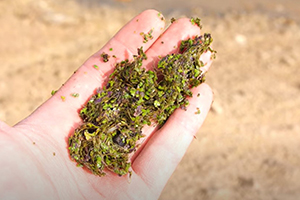 This native North American water plant with its tiny leaves is the smallest flowering plant in the world. It is valuable because of its high protein content. A plant consists of one flat, oval leaf or modified stem – about a quarter of an inch long – floating on the surface of still-moving water.
This native North American water plant with its tiny leaves is the smallest flowering plant in the world. It is valuable because of its high protein content. A plant consists of one flat, oval leaf or modified stem – about a quarter of an inch long – floating on the surface of still-moving water.
Its complete flower cluster consists of a miniature pistillate flower and two miniscule staminate flowers in a pouch-like sac. They attract bees, spiders, mites, and flies. Duckweed grows fast, provides food for fish and aquatic waterfowl and habitat for frogs and fish.
You will find them in all states except South Carolina and Hawaii. The USDA has classified duckweed as a noxious weed. Both Carolinas, Vermont, Oregon, Massachusetts, California, and Alabama prohibit its cultivation.
How to Harvest Duckweed
Use a rake to remove the plants from the water surface and gather the leaves.
How to Use Them
Utilize duckweed as fertilizer and livestock feed. Plants that grow in nutrient-rich water contain high concentrations of trace minerals, carotene, xanthophyll, vitamins A and B, fat, and sugar. They are a beneficial supplement for poultry, animals, and humans.
You cannot eat this great survival food raw as their needles will pierce your mucus membranes. Cook, boil, or roast the leaves and the roots to destroy the toxins and bacteria. The nutrients dissolve in the water, so drink the healthy brew. The flavor reminds of moldy spinach, so add onions, salt, and pepper or put it in soup and omelets. Make smoothies, pesto, or a puree with tastier ingredients.
Even banned plants are valuable as you can harvest and eat them. Some even taste good, and all those discussed have nutritional value to help you survive tough times. Why not pick and add them to the menu?
You may also like:
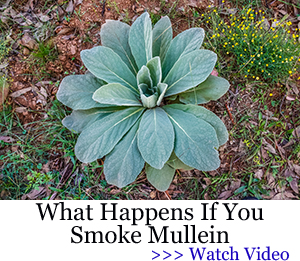 The Only Knot Every Prepper Should Know
The Only Knot Every Prepper Should Know
How To Prepare Medicinal Fermented Garlic (Video)
10 Long Shelf-Life Canned Foods Every Prepper Should Consider Stockpiling

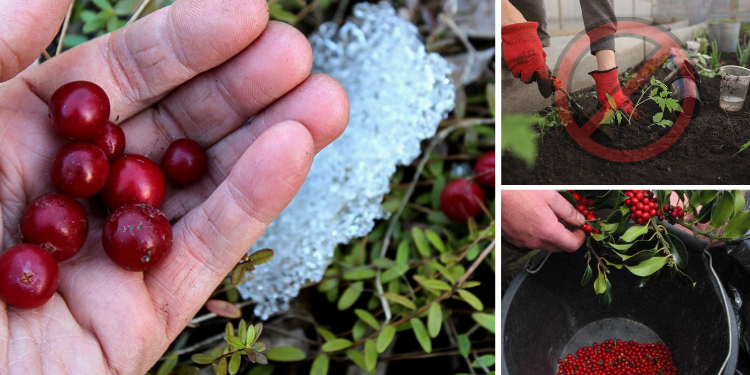













Well in about 6 weeks the Maple syrup starts again and i get to spend my weekends doing that outside. defienetly need to try and improve from the first year but it was a blast to do and process..
Spending hours cooking it down and shooting guns while you’re waiting.
Chuckling Raven’s Gunpowder Brand Maple Syrup 🙂
Seriously the level of work and firewood burned to make maple syrup, and such is a statement to the human drive for sweets.
Pemmican the dried meat, fat and BERRIES mixture springs to mind. Mine is my honeybees.
my user lilnk has the video of what we do with maple sap
Both Red currants and Black currants are legal to grow in New York. That ban, which was put in place years ago was lifted sometime ago.
CC: I remember that law on the books in PA. But, PA went from aggie oriented to factory farming and it was dropped. White pines are not known for fast turnover as are, say, poultry and hogs, LOL. And, since the white pine plantations were harvested, it’s hard to find it on a tree in mixed brush. Werehouser and the rest moved their paper mills and such to Canada to get away from high taxes. niio
I am not that fond of non-moldy spinach. For some reason I think I will need to be on death’s door before I consume a beverage that tastes like moldy spinach with the possibility of also drinking thorns that may pierce my mucus membranes. I think that I will stick to possum and crow before I attempt duckweed, thank you.
Upon reading the headline I thought this article was going to talk about opium poppies and marijuana. Both of which can grow naturally although I understand wild mj may not be as potent as carefully cultivated species. Even though they may grow wild, harvesting such plants will still get you at least a couple nights stay in the crossbars motel.
LLC the best use for duckweed is feeding chickens and as an Excellent side dressing for your garden plants. Fruit trees and bushes love it also.
Natures free Fertilizer.
Michael: Duckweed is the major component in SE Asia after effluent leaves the methane digester. Effluent goes into a series of shallow ponds with gardens around them. Duckweed is harvested every other day for chickens, the house, and pigs. For livestock, they mix it with bran. One major benefit is, duckweed kills mosquitoes, and also purifies water, killing bacteria. niio
Red I’ve been studying Farmers of Forty Centuries by F H King about the Asian farming methods.
King was amazed that they could farm the same acreage without artificial fertilizers several cycles per year (cold weather crops, followed by warm weather and so on often intercropping the new seedlings in the ready to harvest crops) while American Farmers even in 1908 were seeing soil depletion and lowered crop productions.
Pond culture was a large part of it. Duckweed as well as the 5-pond system seems to be deep in the reasons China was so successful feeding a huge population for Centuries despite having so little arable land per capita. A lot of China is mountainous and desert.
I am working on the 5-pond system for my homestead. Peasant level aquaculture 🙂
Michael: when I was in the Far East 60+ years ago, nightsoil was the major fertilizer that I saw being utilized. I did not do any serious investigation of agricultural practices but spreading nightsoil was ubiquitous and easily discernible. Because food was in such short supply on Okinawa and in Japan itself, every vacant plot of land had something growing on it. The Japanese laughingly called it “country perfume.”
Old timers always said, you buy into something that grows money. See what agronomists like Carver and the rest were telling farmers well over a century ago. “Put the black back in the soil and farmers will again be wealthy as they were a century ago.” Gabe Brown, Bismarck, ND, gets 16 inches of precip/moisture a year, yet gets bumper crops without irrigating or chemicals. He went no-till in the 90s and today some of the original 1,200 acres are at 11% organic matter. He uses a lot of covercrops, then grazes them to force them to greater growth. Unlike most of his neighbors, his beef herd grazes all year and gets little hay. I like modern tools over ancient, but have no tiller; permanent mulch over garden beds that were dug down 3 feet to get out the caliche (desert concrete) a la Indians, who have been farming the same lands for several thousand years. They have their very old version of hügelkultur, a pit rather than a hill or mound. Soil Ph is 8.5+ but still does well.
Arizona encourages collecting gray and rainwater, so there’s a pit out back that’s 3 by 8 feet and when done, will be 6 feet deep for a compost put to run gray water in. Next to that, one 10 by 10 x 6 deep for rainwater. Kitchen water needs to be composted before using because of grease and dish detergent.
We got an extraordinary amount of rain last year, far beyond our usual 13 inches. All of it was pulled in by the yardin. In fall, getting close to frost, black winter radishes and rye went in. If you like Asian, they have 2 good winter radishes, Rose and daikon. Roots can go 8 feet deep and the greens can be chopped back to stimulate more growth. I like to scatter green peas in with it, and harvest the peas. Summer, cowpeas because they like the heat, and pump in more nitrogen than they use. They also produce nectar along leaf nodes, not just blooms. Sorghum grows well with them, and older varieties when cut will tiller. Roots can go as deep as 12 feet. We leave leaves on the soil for mulch, and let it go to seed for the next year. Often, in this climate, it comes back from the roots just as chilis will. Beds are from 10-25 feet long and 3 feet wide. Each has at least one fruit tree or grape in it. This cuts back on garden production but also shades the garden in summer, and acts as a windbreak. Both are necessary. Indians liked honey mesquite for that and the nitrogen is produces. niio
LCC, when I was in Japan I spent most of my time in rural Japan at Kami Seya. I will never forget the smell of freshly fertilized fields there.
Not to quibble red, your correct that Duckweed reduces Cyanobacteria , also known as Cyanophyta, are a phylum of Gram-negative bacteria that obtain energy via photosynthesis. Also known as that blue green alga bloom, by consuming the excess fertilization and thus preventing the overgrowth bloom.
The Cyanobacteria is still in the water but at levels not harmful for humans and animals. The Duckweed simply outperforms it in adsorbing the excess fertilizers and such.
Our harvesting every other day for VERY USEFUL uses actually encourages the remaining duckweed to grow even better, much like thinning the beets and carrot seedlings to the 3-4 inches between seedlings they need to grow best.
Not exactly what most folks think when you say it “Purifies water killing bacteria”. E-coli and other raw sewage issues are not directly affected aside from the clearer water allowing UV from the sun to penetrate.
I mention this as so folks don’t think they can drink freely from a Duckweed infested pond safely. Aside from possible contamination from raw sewage and dead animals in the water parasites are a real issue.
A parasite is an organism that lives on or inside another organism. They can enter our body through food, drink, contact with animals, or even infected places. When drinking water contaminated with parasites, it could lead to serious health problems – severe pain, dysfunctions, and even death.
Filtration, boiling and perhaps chemical processing is better. Always assume surface water is contaminated.
Water is life, 3 days without water or bad water your dead or wish it was so.
Michael: Agreed, mostly, but duckweed has been used for centuries to purify sewage and eaten by animals and humans. niio
https://www.fao.org/WAICENT/FAOINFO/AGRICULT/AGA/AGAP/FRG/Recycle/dweed/mandw.htm#Introduction
Thank you red, Very Interesting link 🙂
I’d personally not get my drinking water from the duckweed pod as described 🙂
Would be very hard on the filter.
I wonder if coarsely ground wheat would make do for the bran they mention as rice bran and cassava root is hard to get in NH. I know the girls love sprouted wheat 🙂
Michael: Agreed on the water, but a proper ‘bog’ the water is considered potable. Kali, as well, had to make a bog to clean black water. Methane bacteria eat a lot of parasites. Not enough for me, tho LOL.
Wheat is not supposed to be good for livestock, or not a lot. It’s sticky and gummy. Sprouts, definitely. What you have that’s cheap and local. If you have a mill nearby, then bran should be inexpensive. You can also raise canna lilies for starch, and the leaves are consumed by all animals. Just store enough roots for next year, and clean the rest, peels to the animals, dry the roots for an excellent cooking starch. Old timers used to slice thin, dry, and pound to flour, then sift. Noodles are clear and go well with anything. niio
We have rattan that was once a potential source for rattan furniture and other items made from that plant. The venture folded and apparently rattan likes the climate here in SoCal to the extent it has been declared a pest plant at least in this county.
Every year the county sponsors a rattan clearing project in the river bottoms where the rattan likes to grow. Despite heroic efforts by the volunteers they have not been able to eliminate the rattan and each year finds the acreage infested with rattan bigger and bigger. I am not sure I could tell the difference between rattan and wild sugar cane if I were staring at the two plants side by side. Rattan is our version of kudzu, I think.
Left Coast Chuck,
There is no rattan around here so I do not know if this article I read is accurate but it says that rattan has many uses. The young stem tips are supposed to eatable either roasted or raw. The palm heart of new shoots is edible too. The spiny sheaths are to be cut off and the whitish inner portion is then boiled. What I find really interesting is that some rattan fruits excrete a red resin known as dragon’s blood. That is a great antiseptic for wounds.
All of the above means nothing if the rattan is growing in an area that has a bunch of traffic fumes or two legged people living out there, leaving behind their “night soil”.
I have a 50 or so pound dog that leaves me her “gifts” to bury out back where not much has grown before. Since I’ve been here with the dog, more is growing out back where I have been burying her “gifts”. I used to have a sagebrush patch out back but now it is more of green area with little trees and such.
LCC:
I’m surprised that bamboo wasn’t mentioned, as it’s so invasive. We have two varieties here in Massachusetts in my area: regular green bamboo escaped from gardens and soil stabilization projects and red bamboo, which is “branchier” and is found in swampy areas. Both will take over unless they are ruthlessly culled.
My Microsoft Edge will not allow printing your articles since a new update a few days ago.
Are they censoring your articles?
Who would censor the vanilla content on this site? Another recent problem, I used to copy my replies to my clip board before posting in case something went wrong, instead of losing it just paste it into a new reply. Copy/paste function no longer works when making a reply, no big deal but several odd little problems lately.
My problem is that late at night I can access the site and read all the replies but cannot give a thumbs up or down and while I can compose my usual long posts, I cannot post them. As soon as I hit “post comment” my post disappears to be seen nevermore.
Everything I post since the “improvement” to the site is done on the tiny keyboard of my iPhone 6 and proofread on the tiny screen that it provides.
It is very aggravating. Typically I would compose my post in text edit, proofread it in 14 or 18 point type, copy it and paste it on the website. Nevermore quoth the raven. I really wish folks would stop “improving” that which already works.
I can understand IT folks “improving” an already workable system. If they didn’t, they would be out of jobs. Then, of course they have to debug the new system which makes additional work and then it is time to “update” the system once all the bugs are out. Arrrggghhh! ! ! !
LCC: Yes! If you’re a Heinlein fan, you know one of his favorite sayings was innovation stopped at the wheel. niio
Judge: here-here! If someone mentions a product and I want to find it on-line, I have to write it into the browser or backtrack to the emails. niio
Red after looking at your excellent link I have a question.
These are all tropical methine digesters and such, mostly built with a shovel and plastic sheeting.
Any links for us folks who don’t live in the Philippines or China?
It’s 8 degrees outside this morning, I suspect the bio-digester we’ve been talking about would be AH inactive, if not mostly frozen.
Summertime I don’t need help getting duckweed for my chickens, it’s WINTERTIME I need high protein feeds for them.
Thanks in advance friend
These should lead you to what you need, if you don’t find it here. The first digester I remember reading about was a dairyman in upstate New York. That led me to Howe and what he did in India in the late 1800s. Even here, AZ, where it rarely gets below 25F, I would want it covered and heated in winter. Summer, as well, because 110F and higher is common here for weeks on end. niio
https://biodigesterkenya.com/biodigester-septic-tank/ (best one)
https://www.motherearthnews.com/diy/home-methane-digester-zmaz75zwar/
https://www.homebiogas.com/ (this is a commercial)
https://blog.anaerobic-digestion.com/biogas-stoves/ (another commercial).
My sister bought her house relatively cheap because it had a septic tank. A couple of years ago she had to connect to city sanitation and have the tank filled in, not her decision, “rules”. She had the last septic tank in the area.
Laurening about plants and how they are useful and helpful to is a great thing for me.